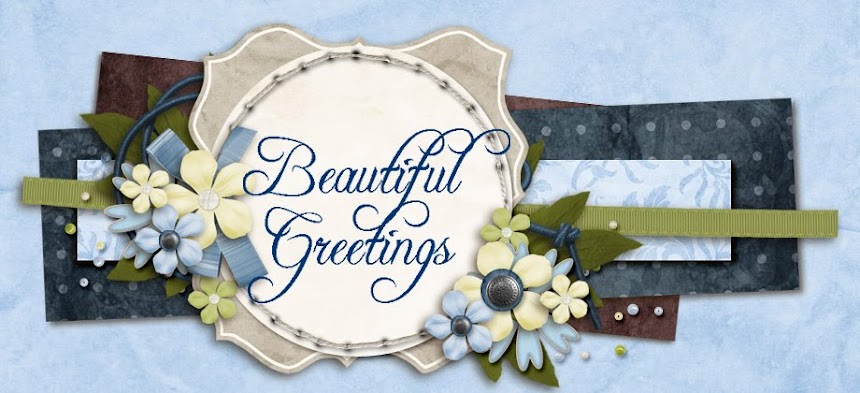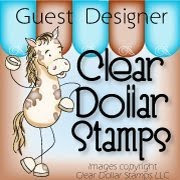Watercoloring with Distress Inks
Welcome to the Pixie Cottage Saturday Tutorial! Today I am going to go over the basics of water coloring with Distress inks. I hope you have fun! It is absolutely one of my favorite ways to color a stamped image and with practice, can create stunning images.
Welcome to the Pixie Cottage Saturday Tutorial! Today I am going to go over the basics of water coloring with Distress inks. I hope you have fun! It is absolutely one of my favorite ways to color a stamped image and with practice, can create stunning images.
 Supplies Needed:
Supplies Needed:Water color paper (I prefer canson or Strathmore 140lb)
Stamped image-heat embossed (I used the wonderful "Hannah at the Pond")
Distress inks (Stampin' UP! waterbased inks work well too)
Aquapainter or small paint brush and water
Towel
Step 1. Stamp and emboss your image. Embossing the image helps to keep the color from bleeding.
Step 2. Squeeze the lid of the ink pad until beads of ink appear on the inside of the lid

 Step 3. When using ink to color your image it is best to have at least two shades to create a dimensional effect. For Hannahs dress I used Milled Lavender for my light shade and dusty concord for my darker shade.
Step 3. When using ink to color your image it is best to have at least two shades to create a dimensional effect. For Hannahs dress I used Milled Lavender for my light shade and dusty concord for my darker shade.Swirl your moistened brush in the lighter color and completely color the area of your image with the shade.
 Step 4. Clean your brush and dip it into the darker shade. Pulling the brush in one direction lay down a small amount of the darker shade in areas that should have shadow.
Step 4. Clean your brush and dip it into the darker shade. Pulling the brush in one direction lay down a small amount of the darker shade in areas that should have shadow.Step 5. Clean your brush but keep it moist. Using small circular strokes, blend the edges of the two colors until you can't see the edge of the darker color.
Let dry a few minutes and repeat in areas that you wish to appear darker.
 (In this image I used Vintage photo and Walnut stain to create the hair and I have used broken china as the first shade in my water)
(In this image I used Vintage photo and Walnut stain to create the hair and I have used broken china as the first shade in my water)Helpful Tips
Don't be afraid to play with different shades of color. If an area becomes too dark, let it partially dry and use plain water to remove some of the color by using circular motions. Sometimes I find it helpful to blot with a towel and then re-blend.
By letting an image dry for a few minutes between colors it keeps the color from pooling against the embossed edges.
I find it faster to color a different area while another is drying.
Here is my finished image
 (The darker shade in the water is Faded Jeans and the grass/leaves is a mixture of Shabby Shutters, Peeled Paint and Pine Needles.)
(The darker shade in the water is Faded Jeans and the grass/leaves is a mixture of Shabby Shutters, Peeled Paint and Pine Needles.)Have fun playing! I can't wait to see what you create!
Sewing a ZigZag Stitch on cards
Sewing on cards is a great way to create a beautiful finished edge. I love using the zig zag stitch because it looks nice and is SUPER EASY to keep straight.
NEEDLE:
Your needle size doesn't matter, just remember that the larger the needle, the larger the hole it leaves. I use a size 11 which is a nice mid size needle. You can still see the holes but they don't overwhelm your stitching.
THREAD:
Another tip is to use your nice colored thread on the top and use a basic cheap thread for your bobbin. This will save you the expense of winding beautiful threads onto the bobbin when nobody will ever see them. When you do this, just make sure that the tension on the bottom is a little tighter than the top. This will pull the top thread down a little farther and you won't see the bottom thread at all. If you have tried to sew on paper and were frustrated with the little loops on the top, it is because your bottom tension is too loose. I use a Brother sewing machine and my tensions are: Top tension is 4 and the bottom is the default. If you keep getting loops, just adjust your top until they disappear.
PAPER:
You will need two pieces of paper but make sure that one piece, if not both are a heavy weight cardstock. Two thin pieces of paper do not stitch well. Cut the two pieces so that the smaller piece is 1/4" smaller than the other on all sides. For my demo, I used one 5" piece and one 4 3/4" piece.
GLUE:
You want to avoid your needle coming into contact with your adhesive. If you sew through your glue, it will not only gum up your needle but will eventually cause your thread to break where you don't need it to break (don't ask me how long it took to realize that!) I usually just make an "X" with my adhesive in the middle, avoiding all edges. This will keep your paper in place while you sew.
 Okay...on to the zig zag stitch.
Okay...on to the zig zag stitch.For my demo today I have my stitch length set at 1.5 and my width at 3.5. You can experiment and see what you like best.
 As you approach your corner slow your needle down and end with your needle on the RIGHT at the very bottom edge. If your needle doesn't naturally end up on the bottom right, just hand turn the dial and guide your needle while keeping your hand firmly on the paper. This will not allow the paper to advance while you place the needle where you want it.
As you approach your corner slow your needle down and end with your needle on the RIGHT at the very bottom edge. If your needle doesn't naturally end up on the bottom right, just hand turn the dial and guide your needle while keeping your hand firmly on the paper. This will not allow the paper to advance while you place the needle where you want it. With your needle in the down position, lift the presser foot and rotate the paper to begin the new side. Your first one or two stitches will slightly overlap but this creates a clean finished corner. Finish the other two sides using the same method.
With your needle in the down position, lift the presser foot and rotate the paper to begin the new side. Your first one or two stitches will slightly overlap but this creates a clean finished corner. Finish the other two sides using the same method.When finished with your last corner, leave the needle in the up position and gently pull your cardstock out and cut your threads. Leave a couple of inches of thread.
 To finish, gently pull the bobbin threads on the back until you can see your top thread come through, using a needle or the tip of your scissors, pull them all the way through to the back of the card.
To finish, gently pull the bobbin threads on the back until you can see your top thread come through, using a needle or the tip of your scissors, pull them all the way through to the back of the card.I knot my thread by tying them all together but if you like, you can just tape them to the back of the card.
 To finish your card, just use your adhesive and glue all of the edges, over the thread and stick to your card base.
To finish your card, just use your adhesive and glue all of the edges, over the thread and stick to your card base.Voila! You have a beautifully stitched card!
Don't be afraid to play and try out new stitches on scrap paper. Sewing on cards can be a lot of fun!




































